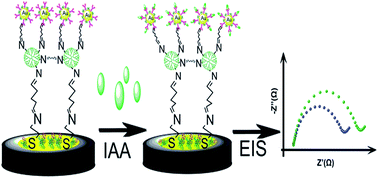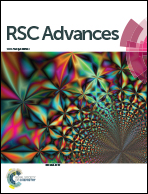A highly sensitive electrochemical impedance immunosensor for indole-3-acetic acid and its determination in sunflowers under salt stress
Abstract
As an important phytohormone, indole-3-acetic acid (IAA) plays an essential role during the whole process of growth and development of plants. In this work, a novel label-free electrochemical impedance immunosensor for IAA determination has been developed. A three-dimensional PAMAM dendrimer was applied to improve greatly the immobilization capacity of antibodies for IAA on a gold electrode. Gold nanoparticles (AuNPs) were used to further improve the sensitivity of the biosensor by forming complexes with anti-IAA antibodies. The developed impedance immunosensor shows ultra-sensitivity, high selectivity and good reliability for IAA detection. The IAA extracted from the stems of sunflowers under different salt stress conditions was successfully detected using the immunosensor. The results are in good agreement with those obtained by UPLC-MS and consistent with published data, thus confirming the practical value of the biosensor. To the best of our knowledge, this is the first electrochemical impedance immunosensor for IAA detection, which provides a promising detection platform for IAA. By replacing antibodies, this strategy can be easily used to detect other phytohormones.



 Please wait while we load your content...
Please wait while we load your content...